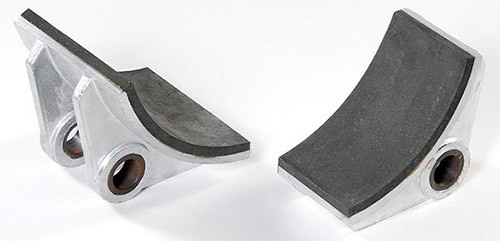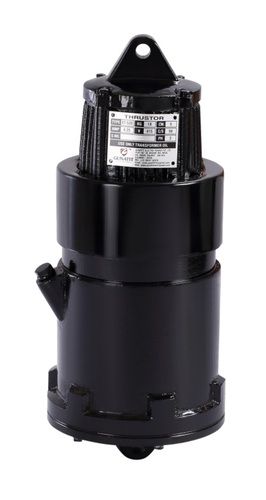
EOT Crane Brake Shoe
1500 INR/Set
Product Details:
- Brake Brake Show
- Color White
- Usage Industrial
- Condition New
- Operating Mode Automatic
- Power Supply Manual
- Click to view more
X
EOT Crane Brake Shoe Price And Quantity
- 1500 INR/Set
- 1 Set
EOT Crane Brake Shoe Product Specifications
- New
- Manual
- Automatic
- Brake Show
- White
- Industrial
EOT Crane Brake Shoe Trade Information
- MUNDRA PORT
- Cash on Delivery (COD), Cheque
- 50 Set Per Month
- 4 Days
- Yes
- Sample costs shipping and taxes has to be paid by the buyer
- CARTOON BOXES TO BE PACKED
- All India
- AN ISO 9001 : 2008 CERTIFIED COMPANY
Product Description
An EOT (Electric Overhead Traveling) crane brake shoe is a crucial component of the braking system in EOT cranes. EOT cranes are used for lifting and moving heavy loads horizontally within a specified area. The brake system is essential for controlling and stopping the cranes movement, ensuring safety and precise positioning of the load.The brake shoe is a friction pad that is part of the braking mechanism. When the brake is engaged, the brake shoe presses against a rotating drum or disc attached to the cranes motor or gearbox. This friction creates resistance and slows down or stops the cranes movement.Key points about EOT crane brake shoes: 1. Material: Brake shoes are typically made of high-friction materials like asbestos, non-asbestos organic materials, or composite materials. However, there has been a trend to move away from asbestos due to health and environmental concerns.2. Function: The primary function of the brake shoe is to generate friction against the rotating drum or disc when the brake is applied. This friction converts kinetic energy into heat, causing the crane to slow down and eventually come to a stop.3. Maintenance: Regular inspection and maintenance of the brake shoes are essential for the proper functioning of the cranes braking system. This includes checking for wear and tear, adjusting clearances, and replacing brake shoes when necessary.4. Safety: The reliability of the braking system is critical for the safety of crane operations. Malfunctioning or worn-out brake shoes can lead to accidents and damage to equipment.5. Types of Brakes: EOT cranes can have various types of brakes, including shoe brakes, disc brakes, or electromagnetic brakes. The choice of brake type depends on factors such as load capacity, application, and safety requirements.Frequently Asked Questions (FAQs): Q. What is an EOT crane brake shoe?Ans: An EOT crane brake shoe is a friction pad that is part of the braking system in an Electric Overhead Traveling (EOT) crane. It plays a crucial role in slowing down and stopping the cranes movement by creating friction against a rotating drum or disc.Q. What material are EOT crane brake shoes made of?Ans: EOT crane brake shoes are typically made of high-friction materials such as asbestos, non-asbestos organic materials, or composite materials. However, there has been a move away from asbestos due to health and environmental concerns.Q. How does the EOT crane brake system work?Ans: The brake system in an EOT crane operates by engaging the brake shoes against a rotating drum or disc connected to the cranes motor or gearbox. This creates friction, converting kinetic energy into heat and slowing down the crane.Q. Why is regular inspection of brake shoes important?Ans: Regular inspection of brake shoes is essential to ensure their proper functioning. Wear and tear can occur over time, affecting the efficiency of the braking system. Inspection helps identify issues early, preventing accidents and ensuring safety.Q. Can I replace EOT crane brake shoes myself?Ans: Brake shoe replacement should be carried out by qualified and experienced technicians. It involves proper knowledge of the cranes braking system, adjustment procedures, and compliance with safety standards. It is recommended to consult the cranes manual and follow manufacturer guidelines.Q. What are the signs of worn-out brake shoes?Ans: Signs of worn-out brake shoes may include reduced braking efficiency, increased stopping distances, unusual noises during braking, or visible wear on the brake shoe surface. Regular inspections can help detect these signs.Q. Are there alternative materials to asbestos for brake shoes?Ans: Yes, there are alternative materials such as non-asbestos organic materials and composite materials. These alternatives are chosen for their high-friction properties while avoiding the health and environmental concerns associated with asbestos.Q. How often should brake shoes be replaced?Ans: The replacement frequency depends on factors like usage, load capacity, and environmental conditions. Regular inspections, as recommended by the crane manufacturer, can help determine the condition of the brake shoes and the need for replacement.Q. Can I retrofit a different type of brake shoe on my EOT crane?Ans: Retrofitting a different type of brake shoe should be done in accordance with the crane manufacturers guidelines. It is important to ensure compatibility with the cranes braking system and to comply with safety standards.Q. What are the safety considerations when dealing with EOT crane brake shoes?Ans: Safety is paramount when working with EOT crane brake shoes. Always follow safety guidelines provided by the manufacturer, use proper personal protective equipment, and engage qualified technicians for installation and maintenance. Regular training on crane safety is also essential.FAQs of EOT Crane Brake Shoe:
Q: What is the operating mode of the EOT Crane Brake Shoe?
A: The operating mode of the EOT Crane Brake Shoe is automatic.Q: What is the warranty period for the EOT Crane Brake Shoe?
A: The EOT Crane Brake Shoe comes with a 1-year warranty.Q: What material is used to manufacture the EOT Crane Brake Shoe?
A: The EOT Crane Brake Shoe is made of cast iron (C.I).Q: What is the power supply mode for the EOT Crane Brake Shoe?
A: The power supply mode for the EOT Crane Brake Shoe is manual.Q: What standards does the EOT Crane Brake Shoe comply with?
A: The EOT Crane Brake Shoe complies with ISO standards.Tell us about your requirement

Price:
Quantity
Select Unit
- 50
- 100
- 200
- 250
- 500
- 1000+
Additional detail
Mobile number
Email
 08045801632
08045801632
 English
English Spanish
Spanish French
French German
German Italian
Italian Chinese (Simplified)
Chinese (Simplified) Japanese
Japanese Korean
Korean Arabic
Arabic Portuguese
Portuguese





 Send Inquiry
Send Inquiry Send SMS
Send SMS
